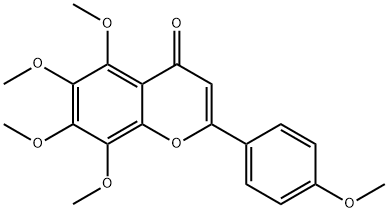Mandarin oil
- CAS NO.:8008-31-9
- Molecular Weight: 0
- MDL number: MFCD00217556
- EINECS: 000-000-0
- Update Date: 2024-12-18 14:15:30
What is Mandarin oil?
Chemical properties
Mandarin oil is obtained by cold-pressing the peel of mandarin oranges, the
fruits of Citrus reticulata Blanco (Rutaceae).The oil is a greenish-yellow to
reddish-orange liquid, depending on the degree of ripeness of the fruit and
themethod used for extraction, and with a pale blue fluorescence and a characteristic
odor, reminiscent of mandarin peel.
d2020 0.847–0.855/0.846–0.854/0.844–0.853; n20D 1.4732–1.458/1.4726–1.4753/1.4722–1.4746; α20D +69 ° to +75 °/+69 ° to +76 °/+70 ° to +79 °;
evaporation residue: 1.9–3.9%/1.8–3.9%/1.4–3.3% (data for green/yellow/
red mandarin oils); solubility: 1 vol in ≤10 vol 90% ethanol (all types) [793].
The main components of mandarin oils are limonene (65–75%) and γ-terpinene (16–22 %).Thecharacteristic feature ofmandarin oil is its content
of α-sinensal (0.1–0.5%), methyl N-methylanthranilate (0.3–0.7%, which is
responsible for fluorescence), and long-chained unsaturated aliphatic aldehydes.
Annual production of mandarin oil in Italy is ~100 t. Additional
quantities are produced in Spain, Brazil, China, Argentina, South Africa,
and so on. However, the sensory properties of the oils may be different from
those of the Italian type because other varieties of mandarins (clementines,
satsumas, etc.) are also processed in these regions. Such oils are also labeled
as tangerine oils.
The Italian mandarin oil is the preferred quality and is used to enrich the
bouquet of flavor compositions containing sweet orange oils as the main
component. It is also used in liqueurs and perfumery.
Chemical properties
Cold expression of rind of almost-ripe mandarin fruits yields an average of 0.5% mandarin essential oil. It exhibits a characteristic mandarin odor.
Physical properties
The physical–chemical constants of the oil vary, depending on the source. The oil is a clear, dark orange to reddish-yellow or brownish-orange liquid. Mandarin oil of Italian production is a clear, mobile liquid, susceptible to turbidity on cooling; the oil ranges from light orange to reddish-orange in color.
The Uses of Mandarin oil
The botanical properties of mandarin oil are very close to those of orange, with mandarin’s sedative and anti-spasmodic properties being more pronounced. It is expressed from the peel of mandarin oranges.
The Uses of Mandarin oil
tangerine oil (Citrus reticulata) has botanical properties similar to those of orange, though with greater anti-spasmodic and sedative properties. Its fragrance, reminiscent of bergamot, is sweeter than that of orange.
Definition
Extractives and their physically modified derivatives. Citrus reticulata, Citrus.
Properties of Mandarin oil
| Boiling point: | 178 °C(lit.) |
| Density | 0.846 g/mL at 25 °C |
| refractive index | n |
| FEMA | 2657 | MANDARIN OIL (CITRUS RETICULATA BLANCO 'MANDARIN') |
| Flash point: | 133 °F |
| Odor | at 100.00 %. floral citrus mandarin orange |
| EPA Substance Registry System | Oils, mandarin (8008-31-9) |
Safety information for Mandarin oil
| Signal word | Warning |
| Pictogram(s) |
 Flame Flammables GHS02 |
| GHS Hazard Statements |
H226:Flammable liquids |
Computed Descriptors for Mandarin oil
Mandarin oil manufacturer
New Products
(S)-3-Aminobutanenitrile hydrochloride 4-Methylphenylacetic acid N-Boc-D-alaninol N-BOC-D/L-ALANINOL Tert-butyl bis(2-chloroethyl)carbamate 3-Morpholino-1-(4-nitrophenyl)-5,6-dihydropyridin- 2(1H)-one Furan-2,5-Dicarboxylic Acid Tropic acid S-2-CHLORO PROPIONIC ACID ETHYL ISOCYANOACETATE 2-Bromo-1,3-Bis(Dimethylamino)Trimethinium Hexafluorophosphate 4-IODO BENZOIC ACID 3-NITRO-2-METHYL ANILINE 1-(2,4-DICHLOROPHENYL) ETHANAMINE (2-Hydroxyphenyl)acetonitrile 4-Bromopyrazole 5,6-Dimethoxyindanone 2-(Cyanocyclohexyl)acetic acid 4-methoxy-3,5-dinitropyridine 1-(4-(aminomethyl)benzyl)urea hydrochloride 2-aminopropyl benzoate hydrochloride diethyl 2-(2-((tertbutoxycarbonyl)amino) ethyl)malonate tert-butyl 4- (ureidomethyl)benzylcarbamate Ethyl-2-chloro((4-methoxyphenyl)hydrazono)acetateRelated products of tetrahydrofuran








You may like
-
 Mandarin oil CAS 8008-31-9View Details
Mandarin oil CAS 8008-31-9View Details
8008-31-9 -
 2033-24-1 98%View Details
2033-24-1 98%View Details
2033-24-1 -
 1975-50-4 98%View Details
1975-50-4 98%View Details
1975-50-4 -
 2-HYDROXY BENZYL ALCOHOL 98%View Details
2-HYDROXY BENZYL ALCOHOL 98%View Details
90-01-7 -
 2-Chloro-1,3-Bis(Dimethylamino)Trimethinium Hexafluorophosphate 221615-75-4 98%View Details
2-Chloro-1,3-Bis(Dimethylamino)Trimethinium Hexafluorophosphate 221615-75-4 98%View Details
221615-75-4 -
 61397-56-6 CIS BROMO BENZOATE 98%View Details
61397-56-6 CIS BROMO BENZOATE 98%View Details
61397-56-6 -
 14714-50-2 (2-Hydroxyphenyl)acetonitrile 98+View Details
14714-50-2 (2-Hydroxyphenyl)acetonitrile 98+View Details
14714-50-2 -
 118753-70-1 98+View Details
118753-70-1 98+View Details
118753-70-1